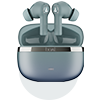Search Topic
Beyond the Loop: Unique Electronic Drum Techniques in Music Production
The beat. It’s the heartbeat of your track, the rhythmic engine that drives emotion and energy. While drum machines and programming have long dominated electronic music, producers are increasingly turning to the electronic drum kit to inject organic flair, dynamic humanism, and unique textures into their productions.
This isn’t just about recording a performance; it’s about leveraging the e-kit’s unique capabilities—MIDI control, velocity sensitivity, and instant sound layering—to push rhythmic boundaries.

The Power of MIDI and Humanism
A programmed beat, even perfectly quantized, can often sound static and robotic. The key to a dynamic electronic drum track lies in humanizing the performance.
Technique: Record your core beat, then quantize lightly (e.g., 70-80%). Alternatively, use your e-kit to record the groove, and then manually nudge the snare or hi-hat hits a few milliseconds off-grid—either slightly early for a “pushing” feel or slightly late for a “laid-back” vibe.
Velocity Sensitivity as a Dynamic Tool: Electronic drum pads are highly sensitive. When you play a rhythm on an e-kit, the force of each strike is translated into a MIDI velocity value. This allows you to capture a natural range of dynamics, from ghost notes to powerful accents.
Technique: Record a simple, four-on-the-floor beat on the pads, focusing on subtle variations in strike force. Then, in your DAW’s MIDI editor, exaggerate those differences. Use a high velocity for the kick on beat one and a lower velocity for a subtle snare backbeat. This immediate, performance-based dynamic range is hard to replicate with just a mouse.
Subtle Groove Manipulation: While you can quantize a performance, leaving a small degree of “sloppiness” is what makes a groove feel human.
Radical Sound Design and Layering
Electronic drums give you unprecedented control over sound layering and selection, turning the kit into a sound design workstation.
Technique: Map sound effects, vocal chops, or even metallic foley recordings (like a door closing or a wrench clanging) to your tom or crash pads. This instantly adds texture and an industrial or abstract quality to your groove, which you can then play in real-time.
Frankenstein Kits and Layering: Don’t stick to the preset kits. E-kits allow you to assign any sound to any pad and trigger multiple samples simultaneously.
Technique: Layer two or three completely different sounds on a single pad: a clean 909 kick for attack, a sub-bass sine wave for the low end, and a short, distorted noise burst for punch. By playing this combined sound, you create a complex, signature percussion hit that is impossible to create with a single sample.
Non-Percussive Percussion: Expand your percussive palette by using non-traditional sound sources.
Real-Time FX and Performance Control
The e-kit can act as a powerful, hands-on controller for effects, transforming your drum track as you play it.
Technique: Try playing a traditional 4/4 rhythm with your feet and a 3/4 or 5/4 pattern with your hands on the pads. Record this, then simplify the sound selection for the hands (e.g., using only a rimshot or a conga sample). This creates a mesmerizing, intricate rhythm that adds sophistication without cluttering the mix.
Live Effect Control: Most e-drum modules or MIDI pads can be mapped to control parameters in your DAW.
Technique: Map a spare cymbal pad to a Reverb Send knob on your DAW’s master channel. As the beat is playing, strike that pad simultaneously to momentarily flood the drums with reverb, creating a huge, washy accent or a dramatic fill transition.
Filter Sweeps: Assign a parameter (like the cutoff frequency of a low-pass filter) to a drum pad’s control surface, allowing you to “play” the filter in real-time over a rolling hi-hat pattern, transforming the texture from dark to bright in an instant.
Polyrhythmic Ghosting: Electronic pads are perfect for practicing and recording fast, complex, and sometimes polyrhythmic patterns.
By moving beyond simple sequencing and embracing the performance aspect of the electronic drum kit, you transform your beats from rigid loops into dynamic, expressive, and truly unique rhythmic creations.
For a great look at how electronic drum patterns are constructed, check out 8 EDM Drum Patterns Every Producer Should Know.
Final Thoughts: The E-Kit Revolution
So there you have it. The electronic drum kit is far more than just a quiet practice tool; it’s a powerful, expressive instrument capable of blurring the lines between programmed perfection and human imperfection.
As producers, we often get stuck in the cycle of dragging and dropping the same samples. By integrating the tactile, velocity-sensitive performance of an e-kit, you gain immediate access to dynamic control, signature sound layering, and real-time effects manipulation that simply isn’t possible with a mouse.
Your Next Step
Stop thinking of the e-kit as a drummer’s toy and start treating it as a MIDI performance controller for your sound design experiments. Challenge yourself to record one rhythmic element in your next track using the pads—whether it’s a subtle hi-hat groove or a radically layered kick drum.
Embrace the subtle timing shifts and the nuanced velocity variations that your human performance brings. This is how you transcend the sterile world of sequencing and inject that coveted unique pulse into your electronic music.
Happy producing!








